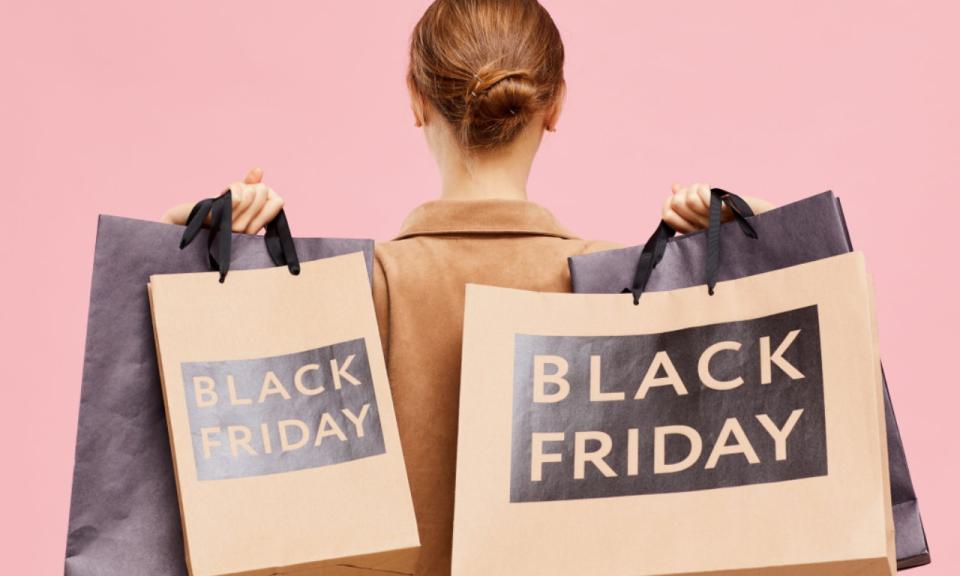
A year of uncertainty means shoppers are hungry for a deal, but things look perilous for bricks-and-mortar retailers
The success of Black Friday 2020 has been imperilled by coronavirus. Social distancing rules – as well as lockdowns in some key economies – mean we will not see the same high concentration of customers in relatively small spaces. Don’t expect so many videos of mad stampedes. Many potential shoppers will also be in a cautious mood after a difficult year, with the prospect of a long recession looming.
Nonetheless, Black Friday will be key for retailers this year. And it is likely that they will find a captive but willing audience of consumers. This may even be one of the biggest Black Fridays ever.
The year has been characterised by economic uncertainty and getting the best value for money is of increased importance in such straitened times, so big price reductions remain a draw.
But Black Friday’s appeal also lies in its ability to excite. Shopping, even online, gives us a dopamine-rich thrill, and this is even more the case in a sale. In a year when excitement and entertainment have been in short supply, there will be a certain burden on Black Friday to provide it.
Online and spreading
There is also the social aspect. As per Cialdini’s theory of "social proof", we tend to act as we see other people doing, so we fit in. This has always been a large part of the psychology of sales. We can very much expect this to be the case this year too, with social media playing a central role. They don’t call them “influencers" for nothing.
But the influence may spread further this year. Black Friday has already grown well beyond a single day, as well as taking place increasingly online as well as in-store. Pandemic conditions will catalyse both trends. We might note that Walmart has announced its physical stores will be shut on Thanksgiving for first time since the 1980s; Target, Best Buy and Kohl’s are following suit.
Both trends could actually result in a higher number of shoppers. Those throngs of aggressive bargain hunters will have proved off-putting to many in the past. No such problems exist online, so Black Friday becomes accessible to all. And you can see how, with sales stretched out for longer, and websites open 24 hours a day, seven days a week, shoppers have more time to capitalise on the deals. While individual shoppers may spend less in total, increased purchase volume could more than make up for that.
Continued below
Industry voice
André Kashiwara, MBA 2016
Senior Manager, Program Management – WW Special Projects at Amazon
2020 has been a unique year due to the uncertainty brought by COVID-19-imposed limitations, and now by the incoming flu season. Retailers will need to be creative, not only to have a successful Black Friday, but to survive the ongoing change in customer behaviour. How can they increase revenues with people scared of going out and visiting stores?
This is where we may see creativity from companies leveraging augmented reality, personal shoppers and, more than ever, their e-commerce platform versus the traditional rush to physical stores. Suddenly, the refresh button of a customer's laptop becomes more important than waking up before sunrise to go to shops.
For retailers, it is an opportunity to review their supply-and-demand models, as observed in the last Black Friday period, where companies like Argos, Curry's and Amazon extended the duration of this period, as opposed to one big day of sales. This allowed them to better plan operations such as hiring, their supply chains, and transportation to successfully meet additional demand.
For traditional bricks-and-mortar stores, Black Friday has taken on a greater than usual significance after a difficult year. This will be by far the best opportunity they have to get rid of excess inventory that has accrued since March. It may also be the last.
These traditional stores will have to make a special effort to recreate the excitement of the in-store experience on their sites and apps. It is imperative that their IT infrastructure is equipped to cope with a potential surge in traffic and orders.
Purely online stores, on the other hand, have had a stellar year. They simply need to maintain the momentum gifted to them by circumstances. Such stores are accustomed to adaptive pricing and quickfire sales, so this online Black Friday will play to their strengths.
Domestic tilt
High-street stores would do well to learn from the example of purely online stores. It will not be enough to offer a blanket reduction on all products. Marketers must do everything they can to build excitement and meaningful connections with customers, leaning on data and employing creativity.
For one thing, they should look closely at what people have been buying online. We have seen a decidedly domestic tilt in shopping habits; people have been looking for items that make their homes more pleasant places to live, work, and pass the time constructively. Sales for things like plants, comfortable home wear, and gym equipment have all registered increases over the year. And it seems like there wasn’t a bread maker to be found in the entire UK in April.
Back in August, pre-second wave restrictions, Accenture reported that the home was likely to remain the nexus of our existences for the foreseeable future, with shopping habits reflecting this. Retailers will have to be alive to these new trends, and target strategies accordingly.
Of course, physical stores will continue to offer benefits: the sensory aspects, the human connection, the immediacy. But to survive, this will have to form an experiential facet of an omnichannel strategy. This change was already well under way pre-coronavirus. The pandemic simply means that room for manoeuvre has grown even smaller.
From a strategic perspective, the lesson of 2020 is clear. We cannot simply rely on old certainties, cruising through the years expecting everything to follow a set pattern. We must prepare for contingencies with flexible, adaptive thinking that reacts to, or better still anticipates, changes in consumer behaviour. On Black Friday 2020, this will be more than a battle for competitive advantage; it will be one for survival.


